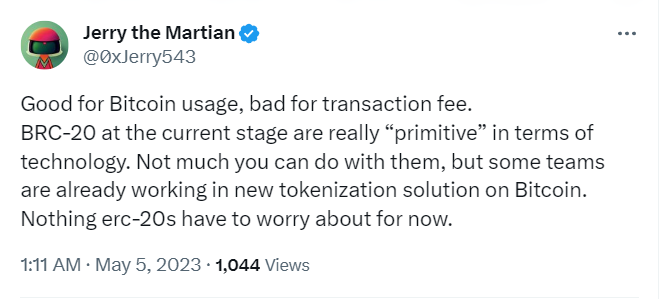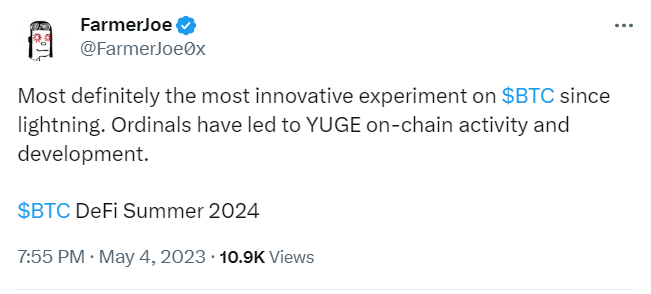BRC-20 Tokens Explained

This blog post will cover:
- What are BRC tokens?
- How do BRC-20 tokens function?
- What is the difference between BRC-20 and ERC-20?
- Crypto community’s reaction
The BRC-20 tokens entered the crypto sphere quite recently. With an obvious allusion to ERC-20, this is so far probably the most successful attempt of developers to bring fungible token functionality to Bitcoin. However, they have received a lot of criticism as well.
In this article, we will discuss the BRC-20 tokens.
What are BRC tokens?
The BRC-20 token standard is a new approach to tokenization, which made minting and transferring fungible tokens possible within the Bitcoin blockchain.
BRC-20 tokens became possible thanks to the Ordinals protocol. The protocol appeared in January 2023, and it allowed the inscription of NFTs on satoshis (or sats), BTC’s smallest denomination.
Then in March 2023, a developer (or a group) that goes by Domo on the Internet, created the new token format to the Bitcoin blockchain.
How do BRC-20 tokens function?
The introduction of the tokens became feasible following the upgrade of the Bitcoin blockchain in November 2021. This upgrade introduced ordinal inscriptions, a crucial technological framework that enables the functionality of BRC-20 tokens.
These inscriptions function by adding a special serial number to a sat, which is then embedded within the witness signature field, which basically is a section of a Bitcoin transaction.
What is the difference between BRC-20 and ERC-20?
A notable distinction among the token standards is smart contract functionality, an aspect that the new tokens lack. Consequently, they are unable to match the extensive utility exhibited by the ERC-20 tokens. Those, for instance, facilitate activities such as interaction with other platforms, trading, and so on. Due to this limitation in functionality, the majority of existing BRC-20 tokens are meme coins.
When it comes to data storage, BRC-20 inscriptions are stored on-chain. In contrast, Ethereum utilizes an external server to store such data. Even though the on-chain storage methodology has its benefits (for example, increased assets’ integrity), it has caused network congestion within the Bitcoin ecosystem, resulting in increased fees. What is more, this disturbs the work of exchanges: Binance for one had to stop BTC withdrawals for almost two hours because of how busy the network got on May 7, 2023.
Additionally, ERC-20 is widely accepted, but their Bitcoin counterparts are rather new, so they might potentially still carry many vulnerabilities and can be subjected to exploits. In April 2023, one of the wallets that carry this type of token, UniSat, suffered from a series of double-spend attacks.
Despite these issues, the number of BRC-20 tokens is growing. At the moment of writing, there were over two hundred tokens with a total market cap of over $1 billion.
Crypto community’s reaction
Since this innovation affects the first and largest at the moment blockchain, it received a lot of attention from the crypto community right away.
Some people are mentioning the drawbacks we wrote about above (e.g. lack of usability, reliability, overloading the blockchain, and increased fees).  Other crypto users support the initiative and believe in the success of some of the projects that use BRC-20 tokens.
Other crypto users support the initiative and believe in the success of some of the projects that use BRC-20 tokens.  In conclusion, BRC-20 tokens are now developing. It is not entirely clear at the moment whether they will become widely used or not. While there are some significant problems connected to the token format, it still brings innovation to the Bitcoin blockchain which can in theory lead to some positive outcomes.
In conclusion, BRC-20 tokens are now developing. It is not entirely clear at the moment whether they will become widely used or not. While there are some significant problems connected to the token format, it still brings innovation to the Bitcoin blockchain which can in theory lead to some positive outcomes.

